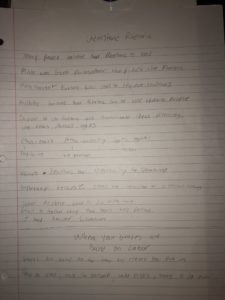Kayla’s Week 2 Digital Receipt

When you start the second series of the article

If you continue scrolling, the image changes and now tells you about where in Antarctica thats losing and gaining ice

Scroll down more and the visual tells you about the geography of the continent

The visual ends off by emphasizing the importance of finding a solution to this issue
Gillis, Justin, et al. “Miles of Ice Collapsing Into the Sea.” The New York Times, The New York Times, 18 May 2017, www.nytimes.com/interactive/2017/05/18/climate/antarctica-ice-melt-climate-change.html.



